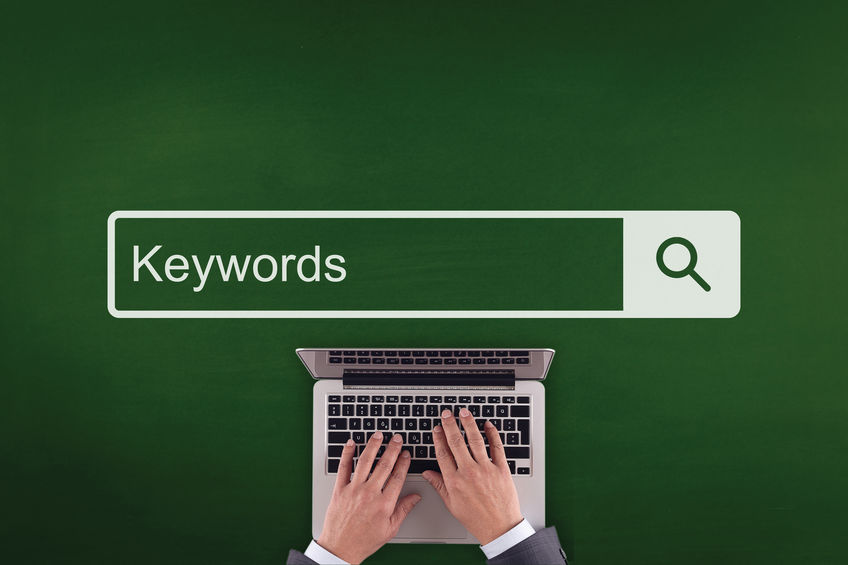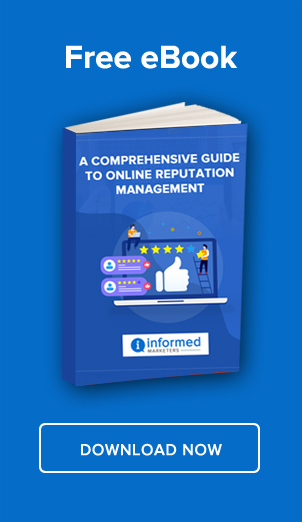A properly set up email marketing toolkit with options for campaigns, automations, and reporting represents a marketing strategy so important, so well liked, and so thoroughly utilized, that it’s become an impossible-to-ignore strategy for content marketers of all types.
The range of differences between available products and the variety of approaches to content marketing through email can make for a dizzying few days of research and preparation.
But what is it you absolutely need to know before you get started? The answer to that question will depend on a number of factors which I will walk you through.
Email marketing is in prime time – a golden age, exploding with all of the wonderful exploration of niches the most powerful and competitive market economies on earth can create. It’s an exciting moment to set up a newsletter, a marketing campaign, or any other lead-based strategy because of the variety of services and products available to suit exactly what you’re looking for. So let’s take a look and set up a game plan.
Getting down to business

A professional will use his or her email address every 30 minutes to an hour. While this could represent something as simple as cleaning away junk mail, emails are now an inseparable part of business. Think of how often you log onto Yahoo, Apple Mail, Gmail, or the in house email networks set up in offices and warehouses.
Many people hold down multiple email addresses at once, it being totally unsurprising to find someone with a personal account, a business account, and an account for the purposes of scapegoating.
Now imagine with all that repetitious checking of email the potential for expanding your brand and sales. However in the same vein, the amount of people in the world with access to email means there will be a lot of stuff showing up in your inbox. One only has to imagine how many emails he or she gets in a day, how many go to the spam or promotions filter, and even after that how many letters and offers one must delete or unsubscribe from to keep their inbox tidy.
So what is the purpose of your signing up for an email marketing toolkit? Let’s run through some obvious examples.
- Maybe you’re setting up an ecommerce store and you think whatever built in email software they use isn’t up to par.
- Maybe you’re setting up an ecommerce store and the platform you’re using doesn’t have integrated email software included in your price package.
- You’re having success with a particular service you offer and want to make sure that anyone looking to set up a consultation or an appointment has access to easy communications with you which don’t require you to answer every single personal inquiry yourself.
- You have a professional portfolio, speaking, or performance schedule and in order for people to stay up to date on when and where you will be appearing, you set up an email newsletter for people to get updates.
- You are partaking in a classic ecommerce plan of action like a sale, giveaway, survey, or more, and you want to make sure you can take advantage of every lead that comes your way during the increased business.
- Maybe you’re simply looking to increase return sales or reduce the number of abandoned carts.
All of these and more represent what content marketers look to email marketing toolkits for. From here until the end of this article I’m going to detail how one should approach an email marketing toolkit and what are some good examples of products and services particularly useful to this or that marketer for this or that purpose.
Imagining the user profile

It doesn’t take a marketing genius to understand the importance of knowing one’s audience. Anyone who attempts to show anything to anyone, whatever his or her purposes are, will have to understand who is most likely going to be interested when thus shown. This is exactly what those who have made such wonderful email marketing toolkits like Mailchimp and Drip and Constant Contact had in their minds – who needs email marketing software, and what does that person need in an email marketing software?
What are some qualities or characteristics inherent in your audience? If you’re an affiliate marketing agent with a dentist’s office as a client, that immediately gives you some important information about what kind of software to buy, what features you’ll need, how high your monthly budget can reach, who is reading your emails, who is subscribing to your emails, and what kind of ROI you will be expected to deliver.
If on the other hand you’re buying software yourself for an upcoming self-published book release, it’s certainly going to be a completely different set of requirements.
Similarly it goes the opposite direction in that customers or the quality of leads might also dictate what kind of software you are inclined to purchase and run. The cost of acquiring the lead of someone looking to buy a cup of coffee is worth 5 cents, the cost of acquiring a lead that’s looking to buy a coffee shop is worth $200.
So questions which need to be answered could be how old is your audience? How familiar are they with navigating their email accounts? Are they looking to buy (x,y,z product), or are they looking for information on them? Are they returning visitors or first timers? Are a lot of your visitors abandoning checkout at some point? Where do they live? What are their professions?
You could go on, and the more thoroughly you understand who you’ll be sending your email campaigns to, the better you will understand exactly what is needed in a platform to do that. Similarly, the better you can understand what a client, or what you, the marketer needs and can afford in a platform, you’ll have a better chance of picking exactly the right software.
Now You’ve Got Your Software What Now?

Okay then, you’ve determined what the user-profile of your audience is, and you’ve determined what your own user profile is, what comes next? Next comes your strategy for implementation, and it would be unlikely that I can detail how you should proceed from here on out in terms of what your emails should look like, who you should send which emails to, etc. etc.
We can go over some quick dos and don’ts to make sure you avoid common mistakes which can often lead to uncommon wastes of money.
For example, one of the first things anyone should master is editing. Bad copy can be an absolute turn off for people viewing your content for the first time. If you need to, download some spell check or grammar check software or browser add-on.
Sloppy copy looks unprofessional, and since many people will already be on a very short fuse in the midst of reading an email marketing promotion, the hyper judgmental side of them which is so greatly increased by the internet curtain of anonymity they operate behind will over inflate, judge, and send all your effort and hard work right into the virtual garbage bin.
Writing a good headline is key for any piece of writing to be engaging.
A couple of basic rules you can follow go like this.
- Don’t bury the lead. People should get the most exciting and engaging piece of information without having to dig for it.
- Try and be as precise as possible. For example, instead of using a headline like “New heart-healthy supplement helps with cardiovascular heath,” say “New heart-healthy supplement lowers cholesterol by up to 35%.” Note the difference in tone and specificity.
- Depending on what you’re marketing or giving notification of, do the world a favor and try not to write a headline that sounds too overbearing or overburdened with advertising jargon.
Now in terms of the body of copy within the email the principals are very much the same. At best an email should be persuasive, but personable; funny and friendly, but also laden with the directives and CTAs needed to make meaningful conversions to boost your ROI.
When you finish your email copy, read it over and examine exactly what kind of action you want the reader to take once they read it. Make certain every option is there for them to explore your products or content. Make it easy on them; include all relevant links there in the email. For instance instead of saying, visit such and such website and enter such and such promo code, just like to the part of the site where they can add the product to the cart. Or better yet, just create code that automatically adds the discount through the clicking of the link in the email.
You’d be amazed at how fickle and sometimes clueless internet users can be. Rather than being clueless, they might not speak English particularly well. They might be a senior, and have a lesser understanding of operating an email browser than the average person. Don’t assume your subscribers are as smart and internet savvy as you are; advertising teaches us they aren’t.
Guaranteeing your emails deliver correctly is the next step.
This can involve several different methods, tools, and checklists. The first is the double and even triple checking that the automations delivering in the correct way. If you set up an automation for a welcome email, test it yourself on several IP addresses. If you set up an automation for abandoned checkout, test it yourself or have your friends test it. Any time you set up an automation for anything, test it yourself to make certain it works.
Many email marketing toolkits will have various criteria you can set which determine who receives an automated response. These can spin you around some times and it’s important to make sure you are setting the correct criteria, and that the message will actually deliver to the subscribers thus within.
Try and stay on top of this troubleshooting as changes in your website or your automations can sometimes interrupt an automation functioning properly. The last thing you want is to go several weeks without noticing that something isn’t working like it should.
Finally, you want to make every effort to avoid email platforms sorting your messages into unimportant, promotional and worst of all, spam filters. There’s no exact science to this sort of thing, as it depends on a large amount of factors that are hard to quantify such as the behavior of the recipient, the email program they use, and what language and content are in your letters.
A couple of super basic rules are to avoid things like “50% off” which are easy for programs like Gmail to detect and sort out of your inbox. Other things like attaching images linking to products and product tags without containing any other important information, like a shipping alert or order confirmation, can also lead to your campaign being labeled as spam.
In Conclusion

So now you’ve learned how to pick the right email software for you and your people, how to avoid fail in the first few attempts by sticking to some basic procedures like spell checking and avoiding span filters, and what in need in and why you might need an email marketing toolkit.
There is almost no end to the amount of useful information you can soak up regarding the utilization and mastery of email marketing for your content, goods, or services, and in the next chapter we will look at some of the ways in which people can work to increase their mastery over this must-have marketing tool.
This post was proofread by Grammarly








